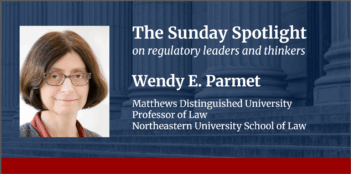
New scientific research and the COVID-19 pandemic should trigger a paradigm shift in indoor air quality regulation.
With the COVID-19 pandemic close to its 1.5-year point, vaccines have taken first place in public perceptions and prevention strategies. Vaccines—only available since late 2020—prevent transmission through the control of infection routes. Preventing contagion through other methods, however, remains useful in the short, medium, and long term. Indoor air quality regulation is an under-explored method to improve control of infection routes and it warrants urgent attention.
In the short term, vaccination capacity still remains largely insufficient at the global level and it is currently impossible to predict a timeline to achieve adequate worldwide vaccination coverage. Even where vaccines are available, rollout is not always smooth and some people refuse vaccination. A considerable amount of suffering and death can be averted if we collectively improve our contagion control measures. The recent epidemic spike in India shows the danger of complacency.
In the medium term, the emergence of new SARS-Cov-2 variants is practically inevitable, particularly if worldwide vaccination rates remain low for an extended period. Although current results on the continued effectiveness of available vaccines are encouraging, there is a risk of decreased protection against new variants, which may lead to the need for booster injections. Again, effective control of infection routes can help mitigate this risk.
In the long term, the COVID-19 pandemic may be controlled, but contagious respiratory diseases will persist—with “well-known,” but regularly mutating, diseases such as influenza or the common cold. Furthermore, catastrophic pandemics are a significant risk because of the large number of potential sources—including zoonotic sources—and the increased likelihood of contagion and spread due to globalization. Even when developing new vaccines is possible, it always takes time. Yet, as this pandemic has shown all too well, in that time the disease can have a disastrous impact on lives and societies. So, prevention is key—and this means, again, improving control of infection routes.
On all three of these time horizons, preventing the spread of disease agents is fundamental. Regulation has a key role to play here, in front of a risk that is invisible and regularly underestimated due to human cognitive biases. So far, during the COVID-19 pandemic, most regulation has failed.
Indeed, to be effective both in general and particularly against contagious diseases, regulation needs to be based on the most recent and accurate science. It must also be risk-focused and risk-proportional. Right now, in many countries around the world, it is generally neither.
A year ago, I noted that in the early stages of the COVID-19 pandemic, many governments had struggled to effectively assess and communicate risks, and regulatory systems had difficulties with unexpected risks and handling uncertainty. SARS-Cov-2 contagion was not fully understood––even though strong findings in support of aerosol transmission already existed as well as research that showed that surface transmission was very unlikely.
Since the initial research findings from summer 2020, the scientific picture has grown ever clearer and stronger about the essential importance of aerosol transmission, but regulation has largely remained based on outdated science and ends up being dangerously inadequate or even counterproductive.
The problem of inadequate rules and guidance started with the wearing of masks, which governments were slow to encourage or mandate—possibly deliberately downplaying it to avoid panic buying or to limit costs. But inadequacy extends to “safe” distances, hand disinfection, “sanitizing” of objects and premises, installation of plexiglass panels, requirements on ventilation, regulation on the use of outdoor space. Some jurisdictions get some of these measures right, but many do not, or only partially. As a result, resources are spent on useless, sometimes harmful, and at best marginally helpful “mitigation” measures.
People are placing confidence in “protection” that does not protect. This false protection allows the virus to spread further, claiming lives and harming societies. Eventually, that false protection will further damage trust in government and institutions as it becomes clear that unfounded measures were imposed.
Governments should address vital short-term remedies first. Some of the feasible regulatory remedies include strengthening mask mandates indoors, improving information on face masks, facilitating the use of public space for open air food service, and mandating short-term measures to improve ventilation. In addition, some practices should be phased out, including the use of plexiglass shields—which do not protect from aerosol transmission. Widespread sanitation of surfaces should be de-emphasized as the practice is useless, costly, impractical, and environmentally harmful. Governments should also develop and implement long-term remedies.
A new paper in Science, written by a major, multidisciplinary group of specialists, calls for a paradigm change in regulation because of the massive evidence of airborne transmission of COVID-19 and other respiratory diseases.
The authors of this paper urge those working on regulation to rethink radically and embrace a paradigm change. They compare airborne diseases to food- and water-borne diseases. While for a good century and a half, many countries have gradually developed robust regulatory systems to address the latter, the former largely remains untackled. In the late 19th century, the increased understanding of the mechanisms of food- and water-borne infections, combined with the development of techniques to prevent contamination, gradually led to food and water safety regulations—and a comparable process led to occupational safety and health regulations.
The authors of the Science paper show how “dramatic growth in our understanding of the mechanisms behind respiratory infection transmission, including from microbiology, immunology, aerosol physics, and building sciences” creates the basis for a new approach that would “protect present and future generations from unnecessary suffering and economic losses.”
Although it has been “much harder to trace airborne infections than those that are waterborne or foodborne,” science has changed, and knowledge now exists on how to control infection. There now “needs to be a shift in the perception that we cannot afford the cost of control, since the economic costs of infections can be massive and may exceed the initial infrastructure costs to contain them.”
The authors of the Science paper call for new international guidance on air quality to go beyond indoor air quality (IAQ) guidelines issued by the WHO and to extend to infection control. The authors outline known techniques to address infection control through ventilation and point to professional organizations that have developed “ventilation standards, and during the COVID-19 pandemic … have proposed … control actions and design improvements to mitigate the risk of infection.” Developing standards, however, is only one step—as the authors rightly point out.
Adopting rules is never enough—regulators need to think about how to create regulatory systems for air safety, just as they exist for food or water safety.
Practitioners and scholars of better regulation and regulatory delivery have a key role to play here. As the Science paper authors rightly point out, a new regulatory system of this importance—comparable to that in place for food safety or in some ways, occupational safety—must be effective, efficient, and reconciled with other crucial objectives, such as energy-efficiency.
New air-quality regulation must therefore be risk-based: “Ventilation rates must be risk-based rather than absolute, which means they need to be developed based on the assessment of the infection risk,” and additional measures must be assessed in terms of “their efficacy in risk reduction.” In addition, the authors argue that “new approaches must be developed to encourage implementation of the standards.” The regulatory policy community has built experience, knowledge, and proven approaches in these areas. It is time to apply them.
Rules should be developed to leave sufficient flexibility on techniques but ensure efficacy. Regulatory impact assessment including cost-benefit calculations must be done in a sound way, considering climate and environmental impacts as well. Regulatory delivery systems will have to be developed to support compliance in a risk-focused, risk-proportional way.
These changes are feasible but will require hard work and effective policy dialogue. But first, policymakers and regulators need to stop applying obsolete science, fix their short-term rules and guidelines, and help businesses and citizens adopt safer practices now.




